Half Title
Title Page
Copyright
Dedication
In Memoriam
Acknowledgements
Foreword
Introduction
Chapter 1 Alarm Management Best Practices: Highly Condensed
1.1 The Alarm Problem
1.2 People Who Can Help
1.3 The ANSI/ISA-18.2-2009 Alarm Management Standard
1.4 Seven Steps to a Highly Effective Alarm System
1.5 Summary
Chapter 2 The History and Nature of the Alarm Problem
2.1 How Did We Get In This Mess?
2.2 Where Are We Now?
2.3 Regulatory Agencies and Alarm Management
Chapter 3 How Do You Justify Alarm Management?
3.1 Economic Justification of Alarm Management
3.2 Analogy to Advanced Process Control
3.3 Analogy to Safety Systems
3.4 Incident Analysis
3.5 Liability
3.6 Aging Workforce
3.7 Summary
Chapter 4 Common DCS and SCADA Alarm Display Capabilities – and Their Misuse
4.1 DCS and SCADA Alarm System Capabilities
4.2 The Alarm Display
4.3 Custom Graphics – Alarm-Related Guidelines
4.4 The Nature of Alarm Priority
4.5 Alarm Priority and Color
4.6 Alarm Priority and Sound
4.7 Alarm Priority Distribution
4.8 Alarm Priority Distribution and Process Control Capability
Chapter 5 Step 1: The Alarm Philosophy
5.1 The Alarm Philosophy Document
5.2 What Should Be An Alarm?
5.3 The Basic and Proper Principles of Alarming
5.4 Poor Alarm Practices
5.5 Alarm Philosophy Customization
5.6 Specific Alarm Design Considerations
5.7 Alarms Used to Prevent Harm to Personnel
5.8 Alarms from Instrument Malfunctions (Diagnostic Alarms)
5.9 Use and Abuse of Combination Alarms
5.10 Alarm Placement
5.11 Redundant Sensors, Voting, and Shutdown Systems
5.12 Safety System (ESD) Alarm Priority
5.13 Safety System (ESD) Bypass/Testing Alarms
5.14 External Devices Alarms – An Engineering Love Story
5.15 Alarms from Fieldbus - type Devices
5.16 Alarm Generation by Programs
5.17 Alarms to Initiate Manual Tasks
5.18 DCS System Diagnostic Alarms
5.19 Point and Program References to Alarms
5.20 Operator Messaging Systems
Chapter 6 Step 2: Baseline and Benchmarking of Alarm System Performance
6.1 Operator Alarm Handling Capacity
6.2 Operator Span of Control and Multiple Operators
6.3 Alarms Are Not Created Equally
6.4 The History of Alarm Analysis
6.5 Alarm System Key Performance Indicators (KPIs)
6.6 Alarms per Day
6.7 Alarms per Ten Minutes
6.8 Alarm Floods
6.9 Alarms Likely to Have Been Missed
6.10 Most Frequent Alarms
6.11 Alarm Priority Distribution
6.12 Chattering Alarms
6.13 Alarms by Type
6.14 Alarm Suppression
6.15 Stale Alarms
6.16 Changes Requiring Management-of-Change Procedures
6.17 Analyses Involving Alarm Acknowledgement
6.18 The Alarm Management Champion
6.19 Alarm Performance Reports
6.20 Alarm Performance Numbers: Are You a Special Case?
6.21 Alarm Configuration Analysis
6.22 Configured Alarm Priorities by Alarm Type
6.23 Configured Alarm Ratio
6.24 Alarm System Performance Levels
6.25 Specific Alarm System Improvement Plans
6.26 Analysis of Operator Actions
6.27 Controller Mode Changes
6.28 Controller Setpoint Changes
6.29 Overall Operator Change Rate
6.30 Correlation of Operator Actions and Alarms
Chapter 7 Step 3: Alarm Bad Actor Analysis and Solution
7.1 Common Alarm Problems and How to Solve Them
7.2 Expected Results from Bad Actor Resolution
7.3 Chattering and Fleeting Alarms
7.4 Alarm Deadband
7.5 Process Value Filtering and Alarms
7.6 Delay Time Analysis and Alarms
7.7 Other Frequent Alarms
7.8 Suppressed Alarms
7.9 Stale (Long-Standing) Alarms
7.10 Duplicate Alarms
7.11 Nuisance Bad Measurement Alarms
7.12 Summary
Chapter 8 Step 4: Alarm Documentation and Rationalization (D&R)
8.1 D&R Overview
8.2 D&R Participation and Reference Information
8.3 Every Alarm Has a Constituency
8.4 The Alarm Rationalization Grids
8.5 Areas of Impact and Severity of Consequences
8.6 Special Guidelines: Probability
8.7 Special Guidelines: Multiple Failures
8.8 Maximum Time Available for Response and Correction
8.9 Priority Determination Grid
8.10 Critical Priority
8.11 Alarms Specified by Process Hazard Analysis (PHA) Teams
8.12 Safety Interlock Level (SIL) Alarms
8.13 Diagnostic Alarms and Other Special Priorities
8.14 Alarm Setpoint Determination
8.15 Alarm Documentation
8.16 The Master Alarm Database
8.17 Alarm Classification
8.18 After the D&R – Implementation of Changes
8.19 Training
8.20 D&R – Expected Duration, Costs, and Helpful Advice
8.21 Helpful Hints for Conducting a D&R
8.22 Common Action Items from a D&R
8.23 Staged Approaches to Alarm Rationalization
8.24 Staged Alarm Rationalization Methodology Details
8.25 Expected Results from Staged Rationalization
Chapter 9 Step 5: Alarm Auditing and Enforcement
9.1 The Entropy of an Alarm System
9.2 Control System Alarm Change
9.3 The Dangers of Alarm Suppression
9.4 Alarm Auditing and Enforcement (A&E)
Chapter 10 Step 6: Advanced, Real-Time Alarm Solutions
10.1 Application of Advanced Alarm Management Solutions
10.2 Alarm Shelving
10.3 State-Based Alarming
10.4 Guidelines for Implementation of State-Based Alarming
10.5 State Detection Logic
10.6 Recommendations for Shutdown State Alarm Settings
10.7 Alarm Flood Suppression
10.8 Design of a Flood Suppression Strategy
10.9 Operator-Adjustable Alarms
10.10 Operator Alert Systems
10.11 Alarm Handling Software – Write Your Own?
Chapter 11 Step 7: The Control and Maintenance of Alarm System Improvements
11.1 Management of Change of Alarm Systems
11.2 Advanced Alarm Monitoring and KPIs
11.3 Annual Audits
Chapter 12 Understanding and Applying ANSI/ISA-18.2: Management of Alarms for the Process Industries
12.1 Purpose and Scope
12.2 Does ISA-18.2 Apply to You?
12.3 Definitions in ISA 18.2
12.4 Alarm State Transitions
12.5 The Alarm Management Life Cycle
12.6 Life Cycle Stages vs. Activities
12.7 Seven Steps vs. Life Cycle Stages
12.8 The Alarm Philosophy Life Cycle Stage
12.9 Alarm Classification
12.10 Highly Managed Alarms
12.11 The Alarm System Requirements Specification (ASRS)
12.12 The Alarm Identification Life Cycle Stage
12.13 The Alarm Rationalization Life Cycle Stage
12.14 The Basic Alarm Design Life Cycle Stage
12.15 Human-Machine Interface Design for Alarm Systems
12.16 Enhanced and Advanced Alarm Methods
12.17 The Implementation Life Cycle Stage
12.18 The Operation Life Cycle Stage
12.19 The Maintenance Life Cycle Stage
12.20 The Monitoring and Assessment Life Cycle Stage
12.21 The Management of Change Life Cycle Stage
12.22 The Audit Life Cycle Stage
12.23 Summary
Chapter 13 The Future of Alarm Management
13.1 A Grim Reminder
13.2 A Conversation
13.3 A Knowledge Worker
13.4 A Vision for 2020
13.5 Transforming the Role of the Knowledge Worker Operator
13.6 Integrated HMI
13.7 Robust Basic Process Controls
13.8 Comprehensive Alarm Management
13.9 Automation and Information Systems Integrity
13.10 Safe Production Knowledge Retention and Decision Support
13.11 Summary
Appendix 1 The Death of the Lightbox
A1.1 Advantages of a Lightbox
A1.2 Observations
A1.3 Loss of View
A1.4 Alarm Configuration Security
A1.5 Disadvantages of a Lightbox
A1.6 Proper Implementation of a Lightbox with a DCS
A1.7 The Death of a Lightbox
A1.8 Lightbox Rationales
A1.9 What About ISA 18.2 and Lightboxes?
A1.10 Conclusion
Appendix 2 Alarm Data Types
A2.1 Alarm Attribute Changes
A2.2 Records of Incremental Changes
A2.3 Records of Bulk Changes
A2.4 Methodologies for Obtaining Alarm Data
A2.5 Operator Change Events
A2.6 Printer Port or Printer Emulation
A2.7 System Databases or Files
A2.8 OPC
A2.9 Custom Software
Appendix 3 An Example Alarm Philosophy
Appendix 4 Operator Effectiveness
A4.1 The Fundamentals of Operator Effectiveness
A4.2 High Performance HMI (Operator Graphics)
A4.3 Graphics Principles
A4.4 Use a Proper Hierarchy of Graphics
A4.5 Level 1 – Process Area Overview Displays
A4.6 Level 2 – Process Unit Control Displays
A4.7 Level 3 – Process Unit Detail and Support Displays
A4.8 Level 4 – Process Unit Support and Diagnostic Display
A4.9 Trends Are Essential
A4.10 Navigation and Functionality
A4.11 Hardwired Switches
A4.12 Seven Steps for Creating a High Performance HMI
A4.13 Control Loop Performance Optimization
A4.14 Benefits of Robust Controls
A4.15 Seven Steps for Optimizing Control System Performance
References
Index of Terms
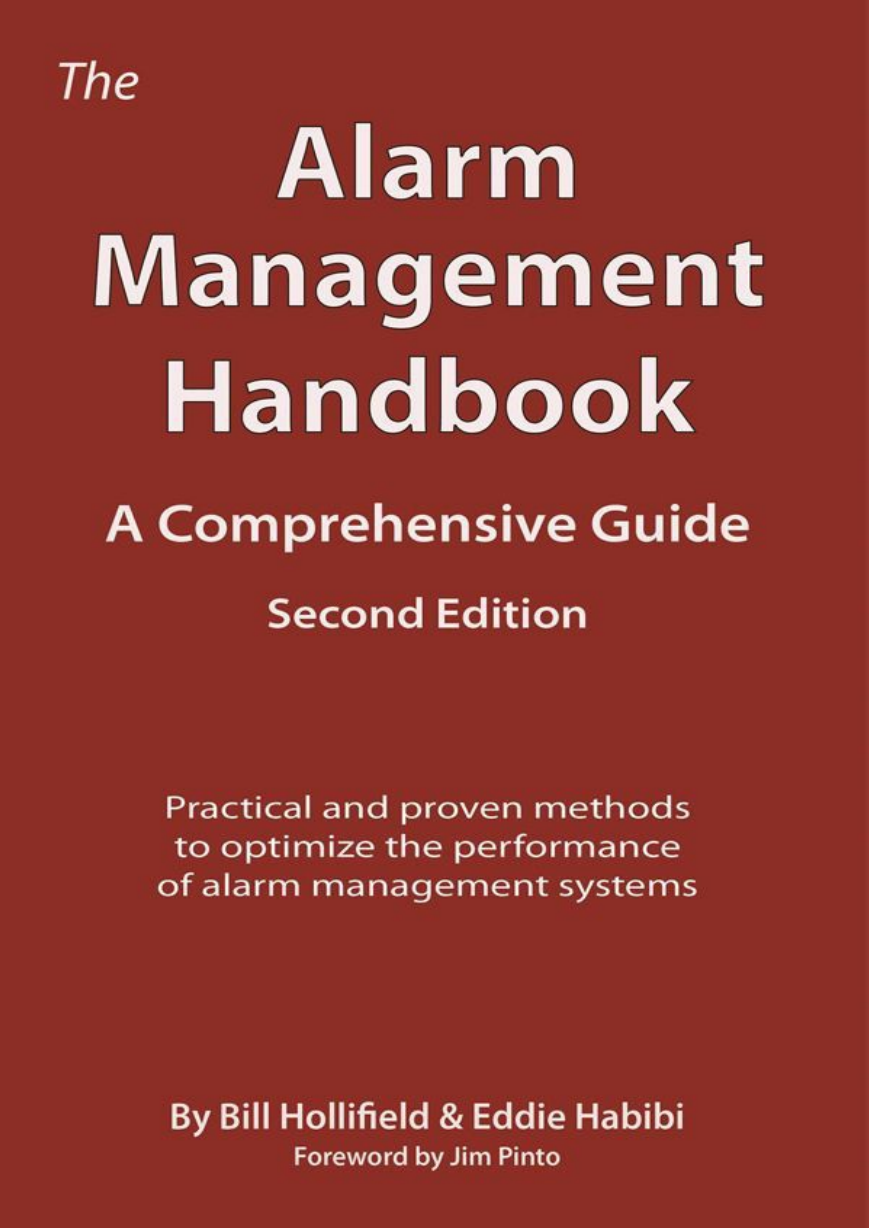
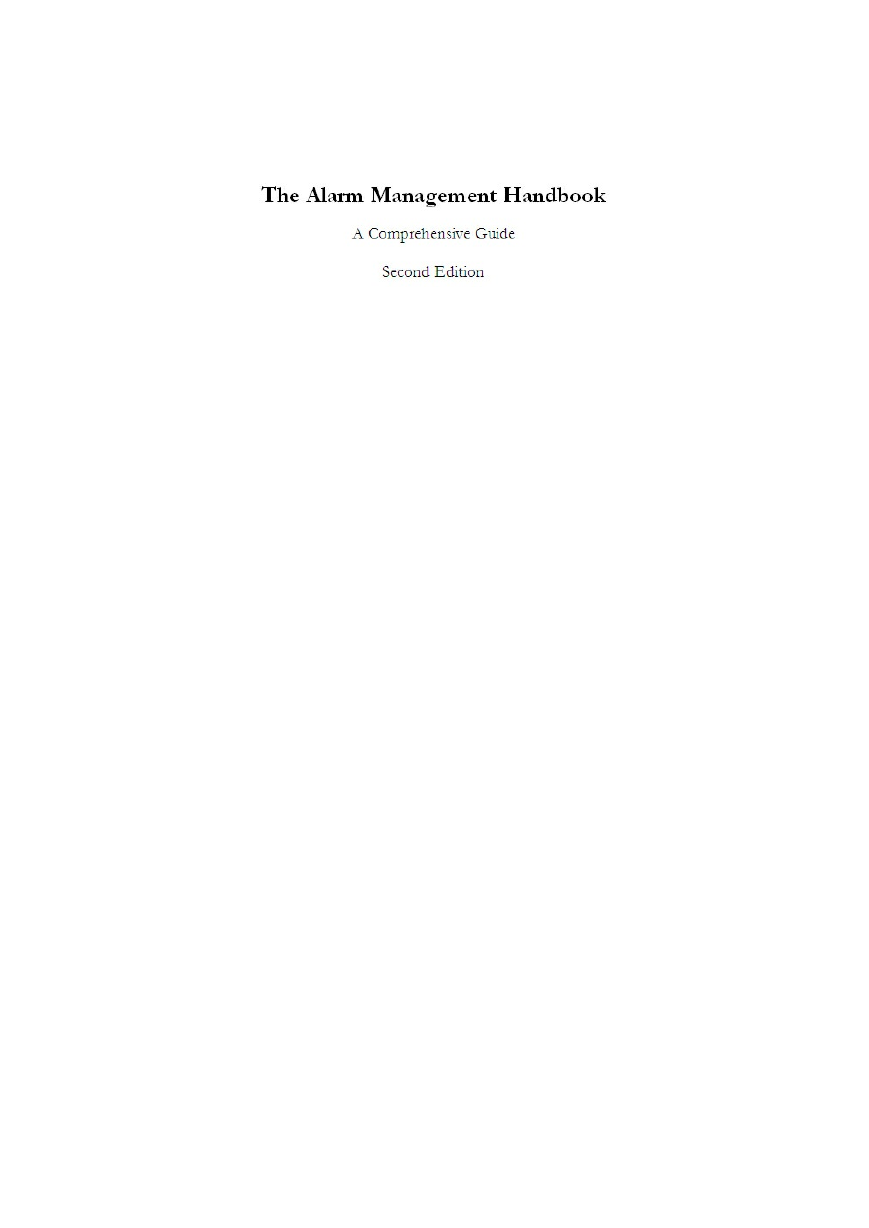
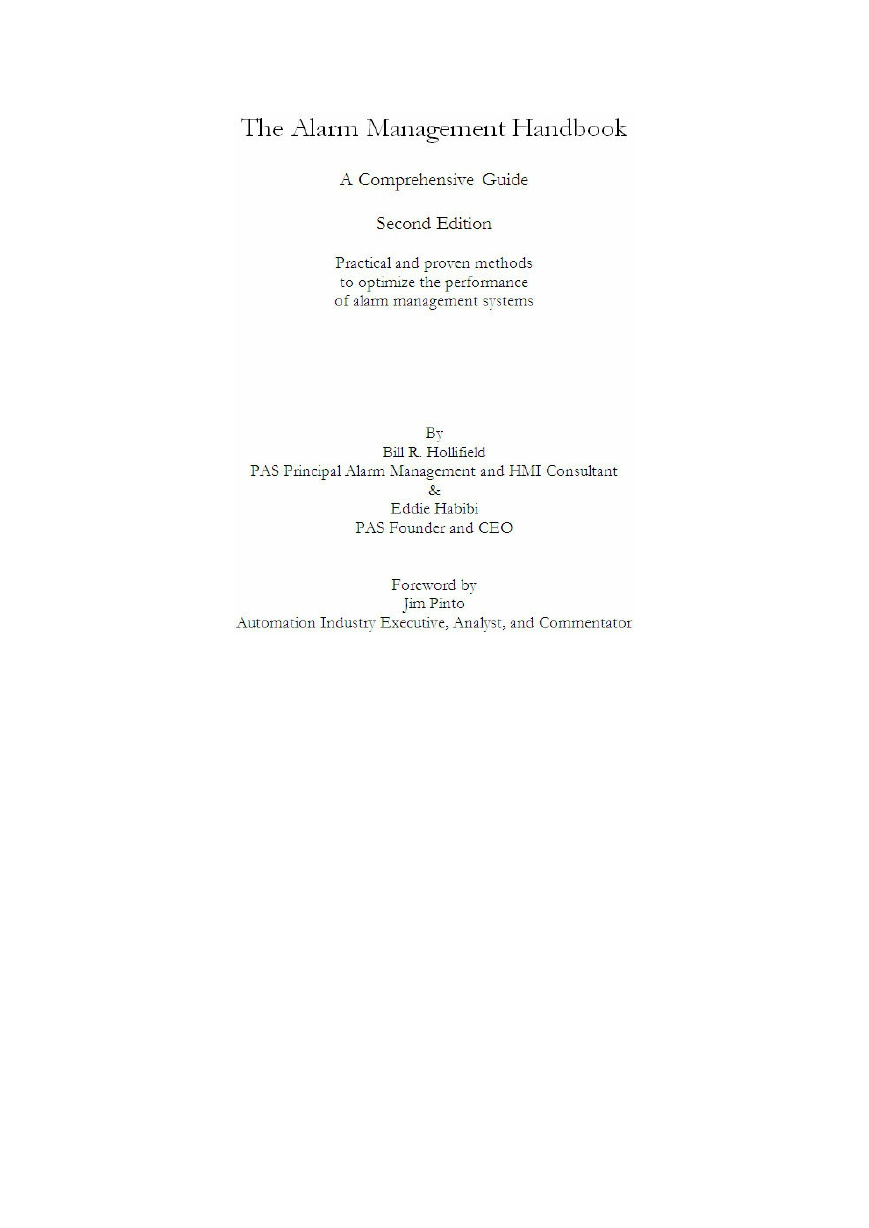
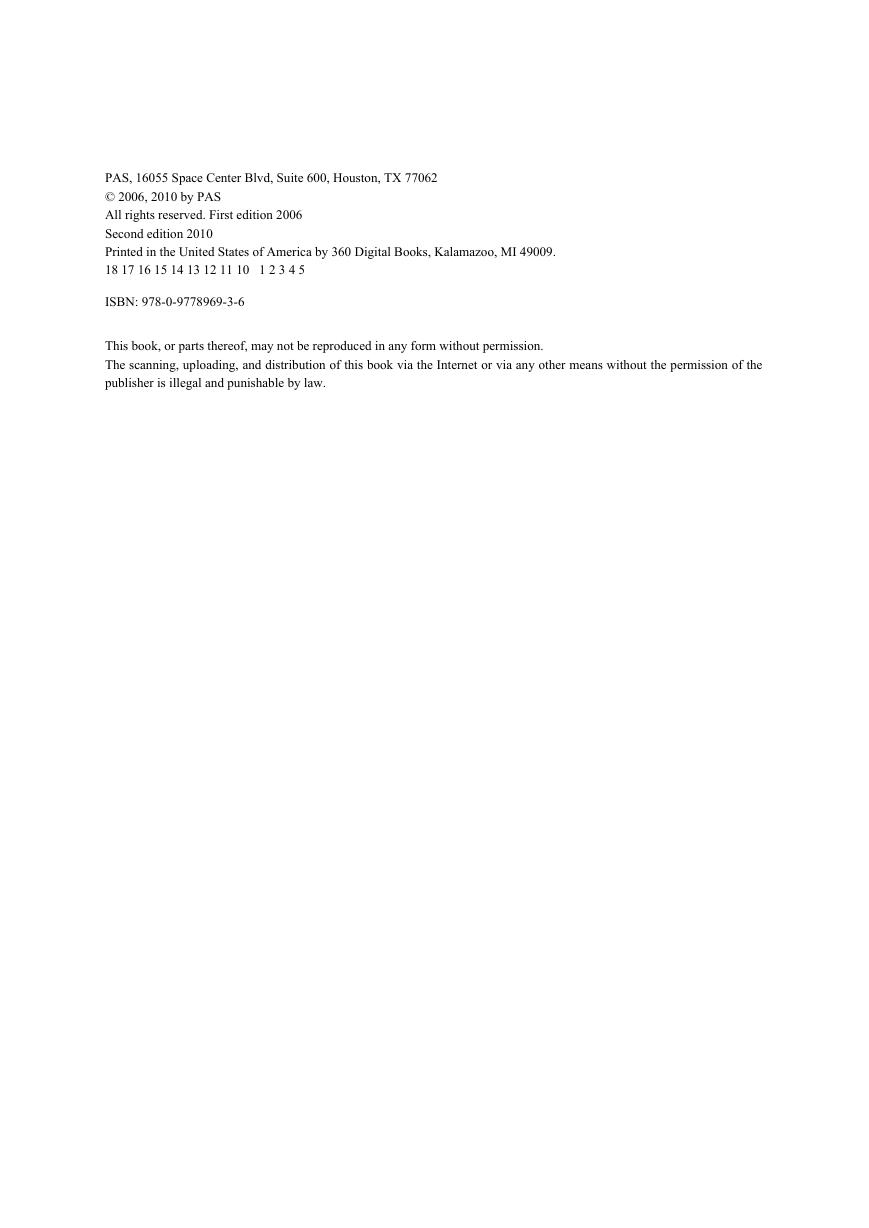

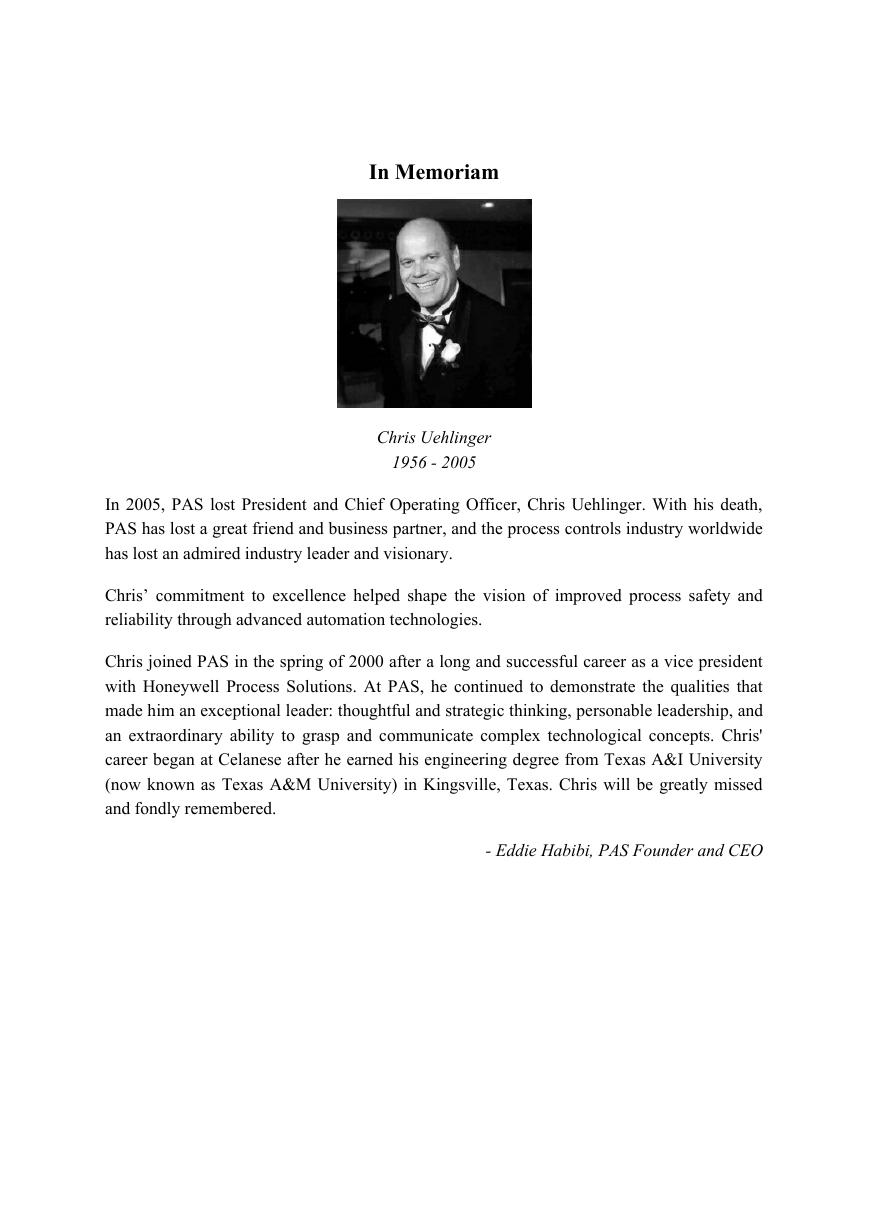
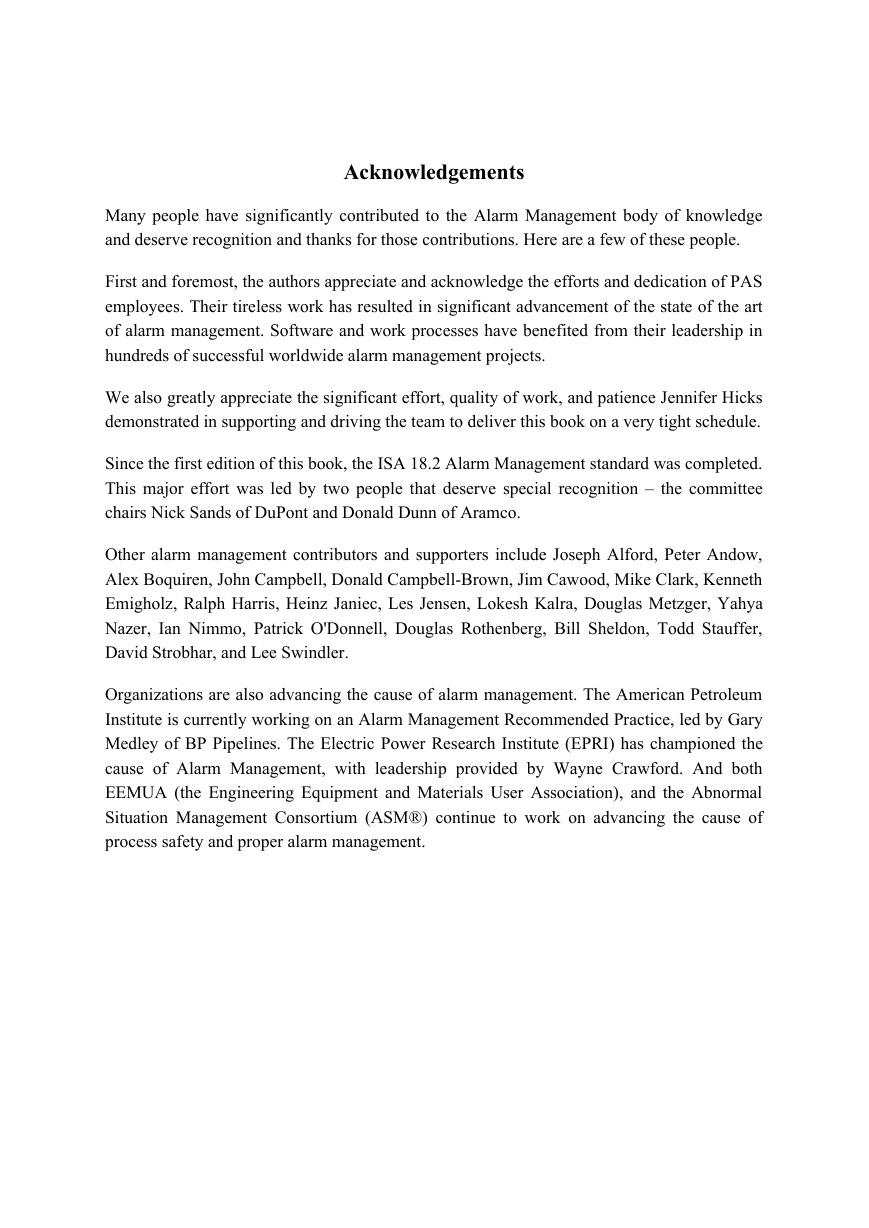
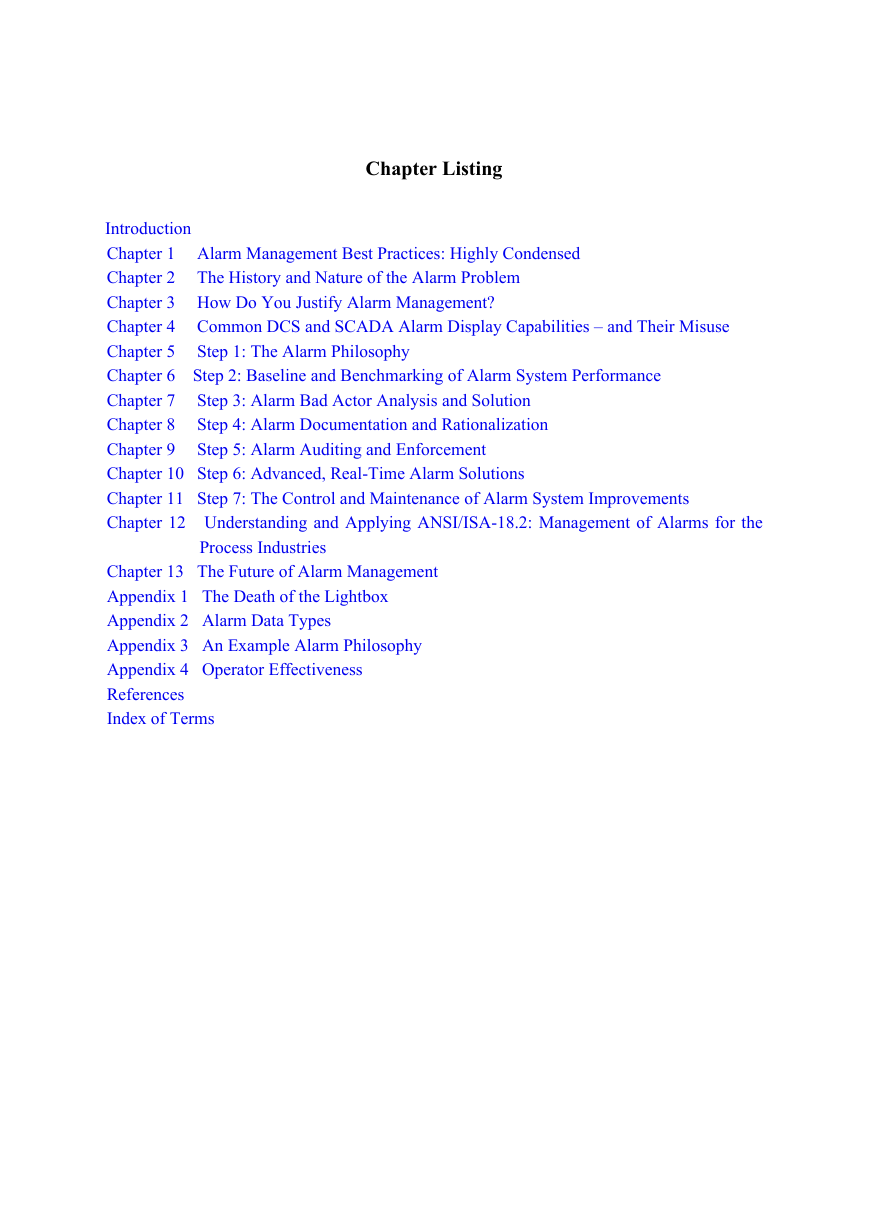








 2023年江西萍乡中考道德与法治真题及答案.doc
2023年江西萍乡中考道德与法治真题及答案.doc 2012年重庆南川中考生物真题及答案.doc
2012年重庆南川中考生物真题及答案.doc 2013年江西师范大学地理学综合及文艺理论基础考研真题.doc
2013年江西师范大学地理学综合及文艺理论基础考研真题.doc 2020年四川甘孜小升初语文真题及答案I卷.doc
2020年四川甘孜小升初语文真题及答案I卷.doc 2020年注册岩土工程师专业基础考试真题及答案.doc
2020年注册岩土工程师专业基础考试真题及答案.doc 2023-2024学年福建省厦门市九年级上学期数学月考试题及答案.doc
2023-2024学年福建省厦门市九年级上学期数学月考试题及答案.doc 2021-2022学年辽宁省沈阳市大东区九年级上学期语文期末试题及答案.doc
2021-2022学年辽宁省沈阳市大东区九年级上学期语文期末试题及答案.doc 2022-2023学年北京东城区初三第一学期物理期末试卷及答案.doc
2022-2023学年北京东城区初三第一学期物理期末试卷及答案.doc 2018上半年江西教师资格初中地理学科知识与教学能力真题及答案.doc
2018上半年江西教师资格初中地理学科知识与教学能力真题及答案.doc 2012年河北国家公务员申论考试真题及答案-省级.doc
2012年河北国家公务员申论考试真题及答案-省级.doc 2020-2021学年江苏省扬州市江都区邵樊片九年级上学期数学第一次质量检测试题及答案.doc
2020-2021学年江苏省扬州市江都区邵樊片九年级上学期数学第一次质量检测试题及答案.doc 2022下半年黑龙江教师资格证中学综合素质真题及答案.doc
2022下半年黑龙江教师资格证中学综合素质真题及答案.doc